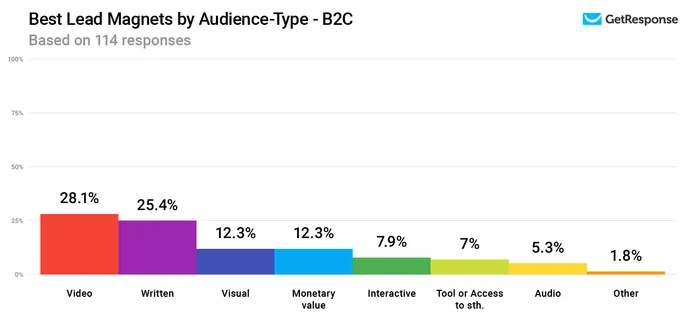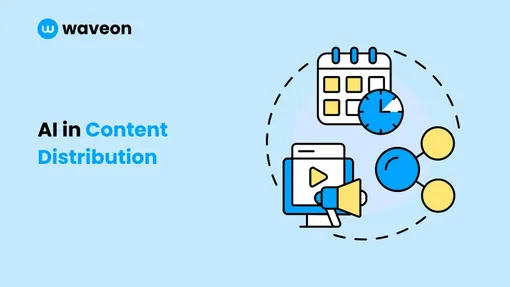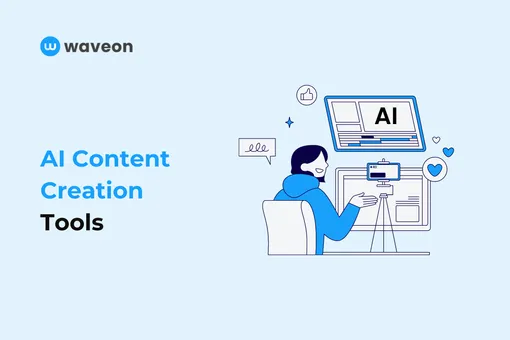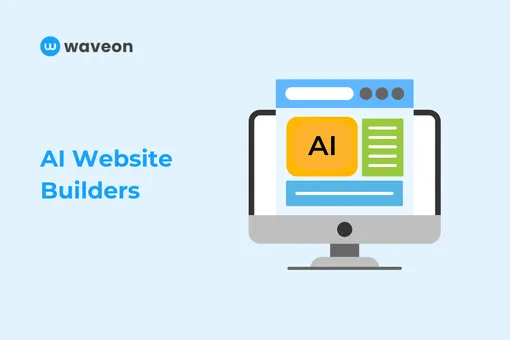Marketing
How to Build a Marketing Automation Strategy (with Examples)
Sanchita
2023.12.14.
0 min read
TABLE OF CONTENTS
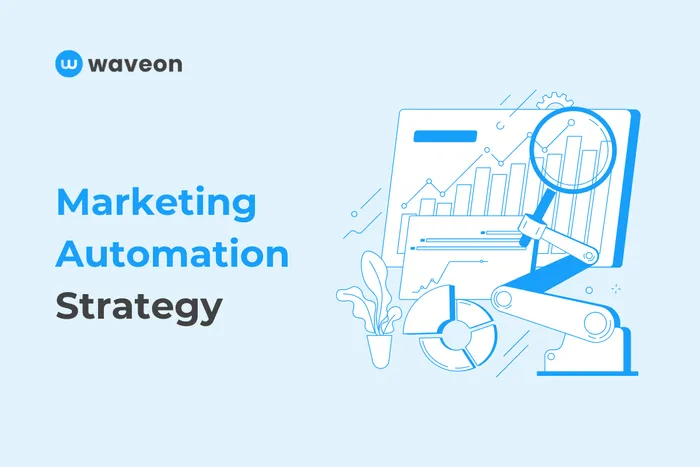
Introduction
Out of all the company’s functions, marketing teams have the most to gain from automation. All the marketing core activities, like collecting customer data and feedback, can be enhanced by using Artificial intelligence.
This was even predicted by MC Kinsey, who conducted 400 case studies to show that marketing will be the most beneficial arena by AI.
However, automating marketing activities needs a strategic approach. Remember, tools are just part of the equation; they will fail to give results without applying a proper marketing automation strategy.
And that's what we will reveal to you in this blog.
What’s the Challenge With Current Marketing Automation?
1. Uneven customer experiences across platform
Salesforce's study shows that 75% of consumers expect companies to provide a consistent experience wherever they engage with them.
Since marketing automation involves an omnichannel approach using emails, social media, websites, and paid ads, providing a seamless experience is challenging. Inconsistencies in the experience will lead to customer confusion and frustration and a damaged brand image.
There’s no perfect omnichannel marketing automation software to help you achieve a seamless experience. However, well-planned workflows can help you achieve seamless omnichannel customer experiences.
2. Making use of customer data for better insights
Businesses today have more data than ever. However, this data is in raw format, which makes it harder to gather insights.
The real challenge lies in organizing data, cleaning up, and extracting helpful business insights. This can be a costly affair that most small and medium-sized businesses cannot afford.
3. Limited personalization due to a lack of resources and data
Modern marketing revolves around personalization. However, personalization requires resources and data, which small and medium-sized businesses don't have.
Achieving true one-to-one personalization requires a deep understanding of customer preferences and behaviors, which incomplete or inaccurate data can hinder.
Questions To Ask Before You Develop A Marketing Automation Strategy
1. What ‘Needs’ Automation, and what needs human touch?
Not everything can be automated. And not everything should be automated. But, there are many activities apart from general trigger-based emails that can be automated. Yet, most marketers are not aware of this.
So, how do we know which tasks require automation? Tasks that are formulaic, time-consuming, and precision tasks require automation.
Whereas, some marketing activities are better handled by humans. For example, writing ad copies. AI tools can never match the emotional abilities of humans.
2. What support does your team need?
While building a marketing automation strategy, it's important to keep both the customer and the team in mind. For example, does your team have enough training and resources to carry out the strategy? If not, it's essential that you train them to use the automation tools.
Also, having resources like marketing collateral, ready-made templates, and guidelines are a plus.
3. Which tools would you be using to track all the marketing activities?
Before you start with execution, it is good practice to decide on the tools that you will be using. Marketing automation has several tools to carry out tasks. Some of these essential tools include tracking and analytics, CRMs, email automation, social media management tools, A/B testing, etc.
Building Marketing Automation Strategy - Step-By-Step Guide With Example
1. Design an intelligent customer experience system
Strategy is the brain of all your marketing automation. It decides which action needs to be taken at what time and on whom! But a misaligned marketing strategy will do more harm than good. Here, we will help you build an intelligent customer experience system.
Example of an intelligent customer experience system
Amazon is a great example of this customer experience system. What does it do? Whatever product you search for, Amazon probably comes in the top of Google searches.
When you visit the product pages, there are upsells and cross-sells based on your activities. When you buy, they automatically email to provide product feedback. Then continuous emails are sent.
All in all, Amazon has an intelligent system designed to make customers spend more happily!
Now, you might think. Well, Amazon has a huge budget, we don’t. Well, you don’t have to spend millions. The market is ripe with budget marketing automation tools that even small businesses can use.
Here’s the list of tools and activities to build your intelligent customer experience system.
#1. Tools to be used
Automation software from a foundation of the entire strategy. Softwares that you will need
Customer Relationship management systems - HubSpot, Salesforce are good examples.
Email automation software - Constant Contact, Active Campaign, and Infusion Soft are good examples.
Social media management tools - If social media is part of your strategy and it must be. Then it's good to have management tools to track activities.
#2. Drawing workflows
Once you have decided on your software, it's time to draw workflows. Marketing automation software allows you to develop workflows which will trigger actions on specific activity. For example, a customer will receive an automation email if they show interest in learning more about your product.
2. Gaining customer attention
Once you mapped out your intelligent system, it's time to move to the next stage, which is gaining the attention of your lead.
Now, before a lead buys from you, you have to gain their attention. And there are few ways to automate this stage. A B2B customer's journey often start with online searches.
Tactic #1: Blogging
No, blogging is not dead, and yes, It's still the best way to get found on Google. Where do people go when they have a question? Not to Instagram, not to YouTube, they go to Google!
The good news is that companies with regular blogs generate 97% more leads than those who don't!
Now, of course, you cannot just write on any topic and expect it to bring leads. Ranking on Google requires knowledge of SEO.
Thought leadership posts are often popular among B2B buyers, so you can do thought leadership on your own site and also become a guest contributor on other industry sites. This way, you are exposing yourself to a vast range of ‘target’ audiences.
Tactics #2: Social media - Finding your tribe
Social media can also act as a good awareness generator, provided you use it wisely. Each social media platform has its own tribe.
For B2B businesses, LinkedIn and Twitter can be good social media to be active. One example of a mind-blowing LinkedIn company page is SEMrush.
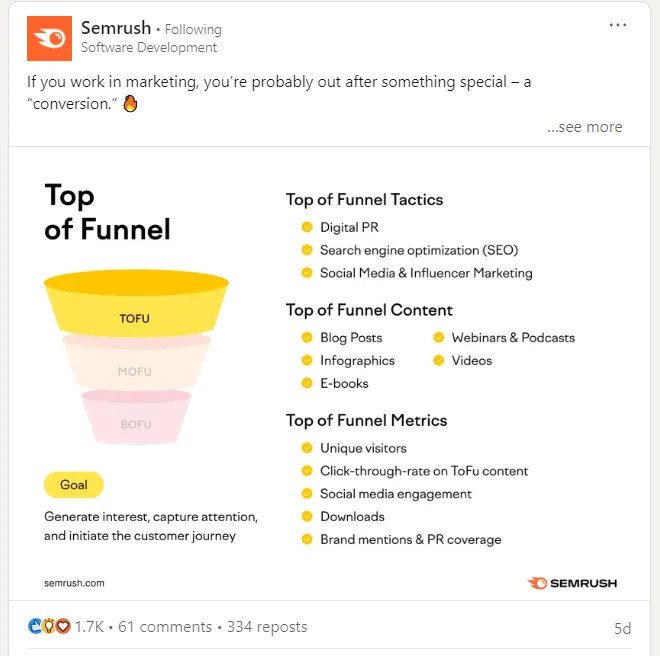
Tactic #3: Offering referral program
Word of mouth still wins in the digital economy. According to Nielsen research, referrals can generate up to 4x higher conversions. People trust people over businesses. But is there any way to automate this? Yes, the answer lies in the referral program.
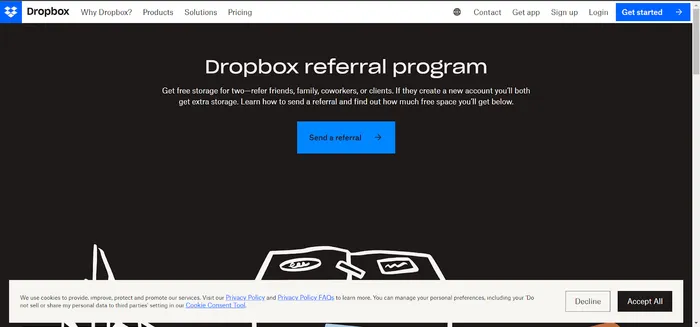
Tactic #4: Chatbot automation
Chatbots have improved a lot over the years and can easily carry out meaningful conversations today. The key to using a chatbot lies in proper training and useful prompts. Through proper training, chatbots can be used for various tasks like lead generation, customer support, etc.
Chatbot automation can enhance the customer experience by providing instant responses to frequently asked questions. It can also guide users through the sales funnel and offer product recommendations based on user preferences.
The key to successful chatbot automation lies in designing conversational flows that align with marketing and sales goals. Ensure that the chatbot's responses are contextually relevant and that it seamlessly transitions users to human support when needed.
Tactic #5: Cold email automation
People who say cold emails don’t work don't know how to write a good cold email.
Cold email is a powerful lead generation tool, provided you use it wisely. The only caveat is the low conversion rate. Most of the cold emails won't be opened or will end up in the rubbish folder.
So, a cold email strategy is a numbers game. For this, you can use email automation tools. These tools allow you to schedule and send emails and track metrics like opens and clicks. You can also schedule a follow-up email to nurture the lead. .
Good practices for cold emails include personalizing subject lines, keeping mail short, and using the right name.
Tactic #6: Free Tools
This is a game-changer. Most of us use free web tools, and so does your audience. Free tools are one of the best ways to generate quality traffic. Let’s take an example. Ahrefs gives away free backlinks checkers and other tools. This way they are exposing themselves to their target audience.
So, what happens if they like the backlinks checker? They might want to check out the premium version. And voilà, if it solves their problem, they will become a regular customer of Ahrefs.
Isn’t the mind-blowing? Without doing anything, Ahrefs is gaining customers simply by using their free tools for lead generation.
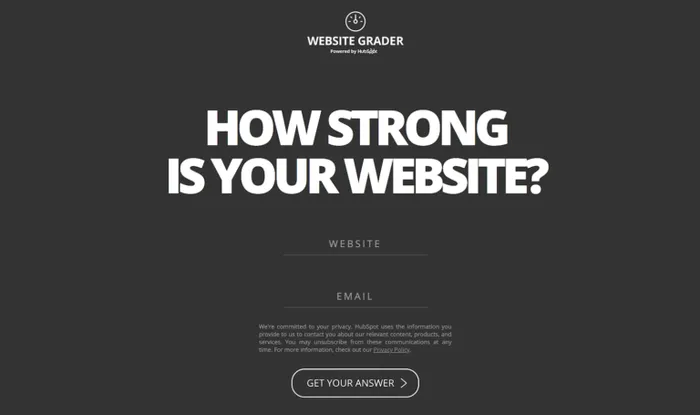
Another example is Hubspot’s website grader. It tells you how strong your website is.
3. Turn attention to conversion
Now, in the third stage of strategy, we will look at converting attention to conversion.
Using email automation
Now, this is where you need to embrace email automation. Now that you have got the lead’s attention, it's time to embrace email automation. So, whenever leads take up specific action, they should receive an email.
So, let us say your customer signed up for a free trial of your software. So you can start sending onboarding emails. If they have not used a free trial yet after signing up, you can send a reminder email etc.
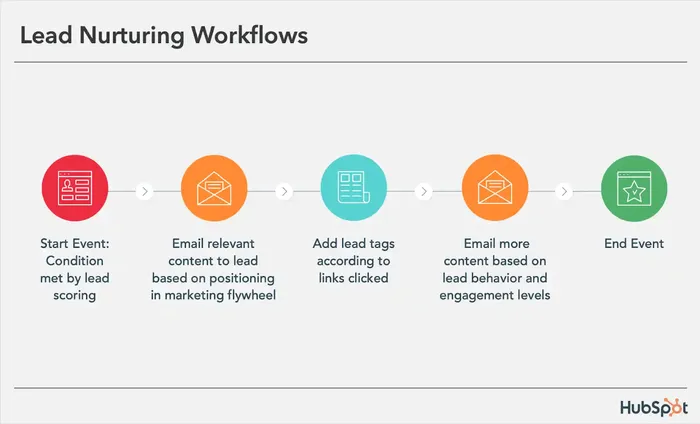
The above image shows an example of lead nurturing workflows.
Host a Live Q and A session
Webinars are an extremely powerful marketing tool, especially in B2B.
Using lead magnets
You can also use lead magnets like case studies, white papers, and e-books to get leads on your email list. However, it's important to provide value in your lead magnets. Video formats are the most preferred lead magnet by B2B customers, followed by written and visual formats.
Note: It's significant to remember that, after trying out all the avenues if the lead is not taking any action, it's time to scrub them out of your list.
4. Re-engaging with more value for repeated visits
Now, you have entered the fourth stage of marketing strategy. This stage comes after the lead has been converted into a paying customer. It's critical to not ignore this stage. Here’s why.
You have taken so much effort to establish a relationship with customer. You gained their attention, you followed up with them, you built trust with them. Starting this cycle over and over again is extremely taxing. So this stage focuses on retaining your customers. How? Through re-engagement tactics.
For example, let’s suppose a customer subscribed to your payroll software suite. Don’t stop here. It's highly likely that they can have more payroll needs than your ‘others’ products or services can meet. So, you can use a re-engagement strategy to make them buy more from you and make repeated visits.
Using existing content to re-engage audience: You might already have a blog series or a video series. You can create a new email workflow to follow up with your customers and engage them through pre-created content.
Brands often use re-targeting ads to make customers do repeat website visits.
5. Track results and refine
No strategy is perfect. You will have to keep experimenting relentlessly to find balance. This is what a company called Stitch Fix does. They encourage the employees to run hundreds of experiments per month and then feed those experiments to their intelligent customer experience system.
It allows them to understand the style choices of their customers. There are many tools that can help you with testing. One of the significant testing tools is A/B testing. The market is ripe with tools like HubSpot A/B testing kit, Crazy Egg which automate most of the testing part for you.
Experiment: Building A Marketing Automation Strategy For B2B SaaS Business
Now, let's implement the above framework to develop a strategy for the b2b SaaS business.
Step 1: Design an Intelligent Customer Experience System
Strategy starts with designing an intelligent system. Here are key things to highlight.
Identify Target Audience: Start by defining your ideal customers. Note down their pain points, preferences, and behaviors.
Select Automation Tools: Choose appropriate automation tools like CRM software, email marketing platforms, and social media management tools (e.g., Hootsuite).
Map Customer Journeys: Create customer journey maps to visualize the stages your prospects and customers go through.
Set Trigger Points: Define trigger points for automation for various activities such as website visits, form submissions, or email interactions.
Develop Personalization: Customize email templates and messaging to address specific pain points or needs of different customer segments.
Automate Follow-Ups: Automate follow-up emails based on customer actions, such as abandoned carts or content downloads.
Step 2: Gaining Customer Attention
Content Creation: Develop valuable and informative content relevant to your B2B audience, such as blog posts, white papers, or case studies.
SEO Optimization: Optimize your content for search engines to attract organic traffic. Use keyword research tools to identify high-impact keywords.
Social Media Engagement: Share your content on social media platforms where your target audience is active. Use scheduling tools to maintain a consistent posting schedule.
Develop A Referral Program: Implement a referral program that encourages existing customers to refer potential leads to your e-commerce platform.
Integrate Chatbot: Incorporate a chatbot on your website to engage with visitors, answer FAQs, and capture lead information.
Start Cold Email Campaigns: write personalized cold email campaigns targeting potential B2B clients.
Step 3: Turn Attention into Conversion
Email Automation: Set up automated email sequences for onboarding new customers, sending product recommendations, or providing educational content.
Lead Magnets: Use lead magnets such as e-books, white papers, or case studies to capture email addresses and nurture leads.
Behaviour-Based Triggers: Implement behavior-based triggers, like sending a discount code when a lead visits a pricing page.
Segmentation: Segment your email list based on engagement level and interests to send highly targeted content and offers.
Webinars and Demos: You have gained the attention of your leads. So, you can now host webinars or product demos to showcase the value of your B2B products or services.
Step 4: Re-Engaging with More Value for Repeated Visits
Content Re-Engagement: Use existing high-quality content to re-engage your audience. Send out newsletters featuring valuable blog posts or industry insights.
Retargeting Ads: Set up retargeting campaigns to bring back visitors who showed interest but didn't convert.
Customer Feedback: Solicit feedback from existing customers and use it to improve your products or services.
Cross-Selling and Upselling: Identify opportunities to cross-sell or upsell additional products or services to existing customers.
Loyalty Programs: Implement a loyalty program that rewards repeat purchases and customer referrals.
Step 5: Track Results and Refine
A/B Testing: Continuously test different elements of your marketing automation, such as email subject lines or CTAs, to optimize performance.
Analytics and Reporting: Use analytics tools to measure key performance indicators (KPIs) like conversion rates, open rates, and click-through rates.
Feedback Loops: Gather feedback from both customers and your marketing team to identify areas for improvement.
Iterate and Adapt: Based on data and feedback, refine your marketing automation strategy regularly to ensure it aligns with evolving customer needs and market trends.
Conclusion
A well-structured marketing automation strategy can be a game-changer. By understanding the needs and complexities of buyers, you can leverage automation to streamline processes, nurture leads, and drive conversions effectively.
Our strategy emphasizes the importance of creating an intelligent customer experience system, personalized content, and targeted outreach for B2B audiences. It also highlights the significance of tracking performance, refining campaigns, and continuously adapting to changing market dynamics.
Remember that success in B2B marketing automation is an ongoing journey, and staying agile and responsive to customer feedback is key to long-term growth and success.

